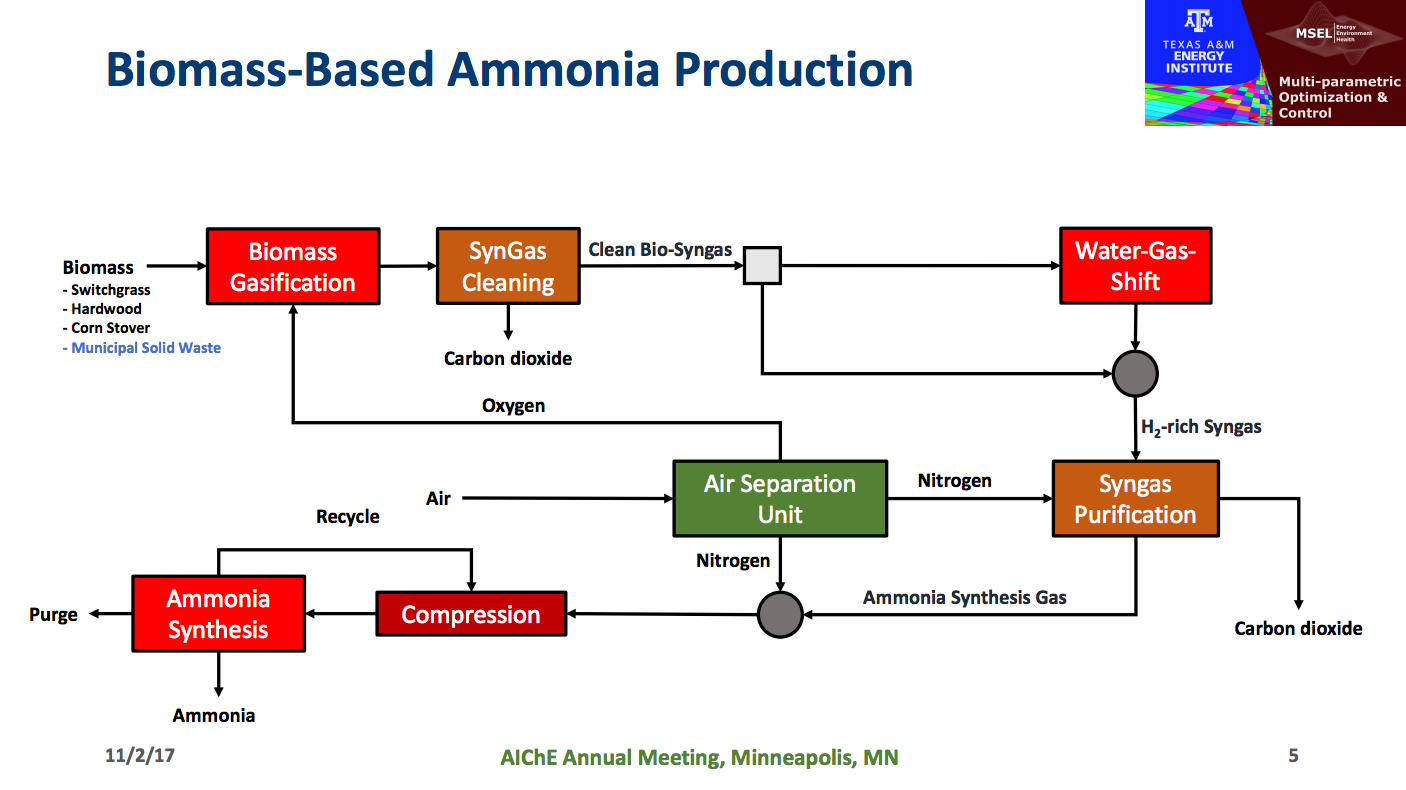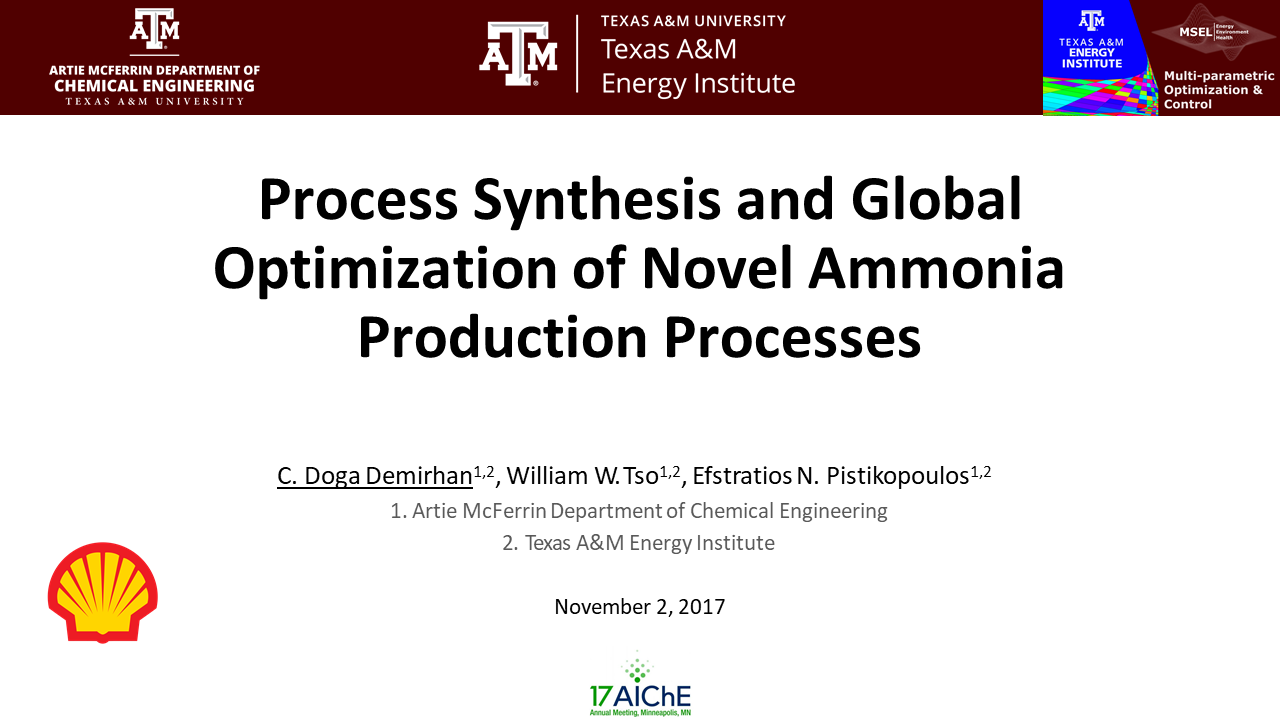At the 2017 NH3 Energy+ Conference, graduate student Doga Demirhan reported on an ongoing investigation at the Energy Institute at Texas A&M University. The work involved evaluation of options for an ammonia production system and concluded that biomass could be an economically viable feedstock under current, real-world conditions. This is a notable outcome. Just as notable is how it was reached.
Content Related to Texas A&M University
Article
Process Superstructures and the Production of Cost-Advantaged Ammonia
Stephen H. Crolius February 01, 2018
Presentation
Process Synthesis and Global Optimization of Novel Ammonia Production Processes
Synthetic ammonia production has played a huge role in sustaining population growth by providing the nitrogen in fertilizers that are widely used in modern agriculture. Even long after it was first commercially developed by Fritz Haber and Carl Bosch in the 1930s, the Haber-Bosch process remains the basis for industrial ammonia production today. Through reducing energy requirements by half in the last 50 years, centralized industrial plants have kept their technical and economic advantage over other modes of operation. However, the centralized production also comes with high transportation costs, since plant capacities usually exceed local ammonia consumption [1]. This and…

